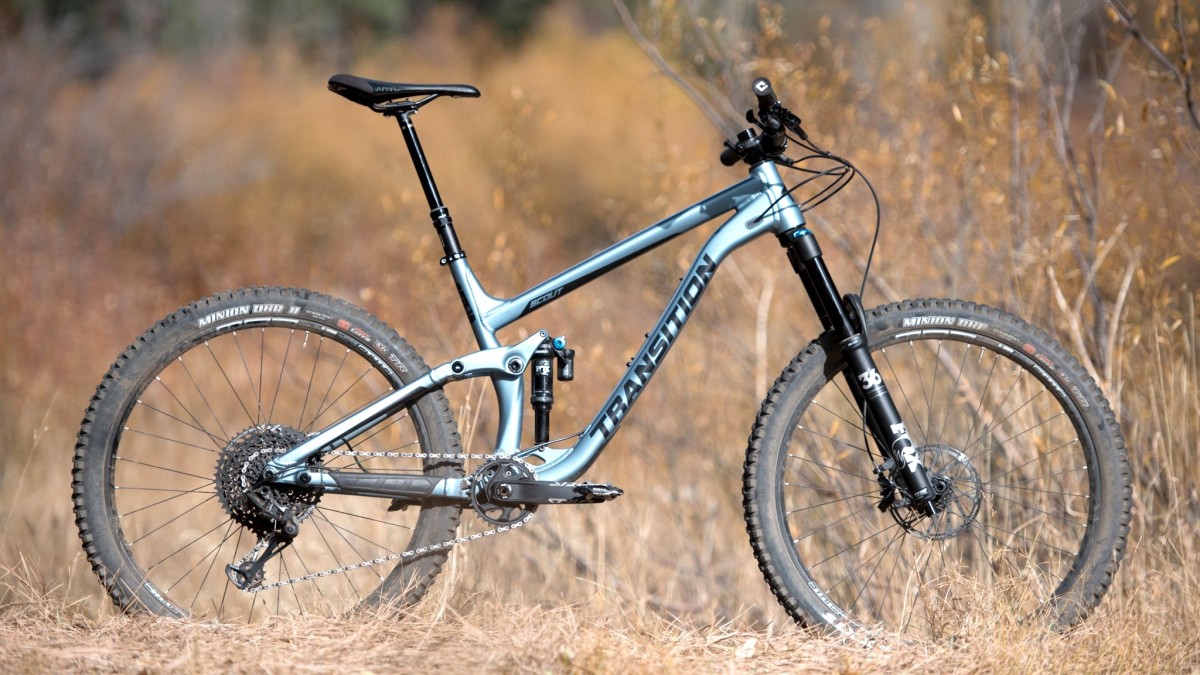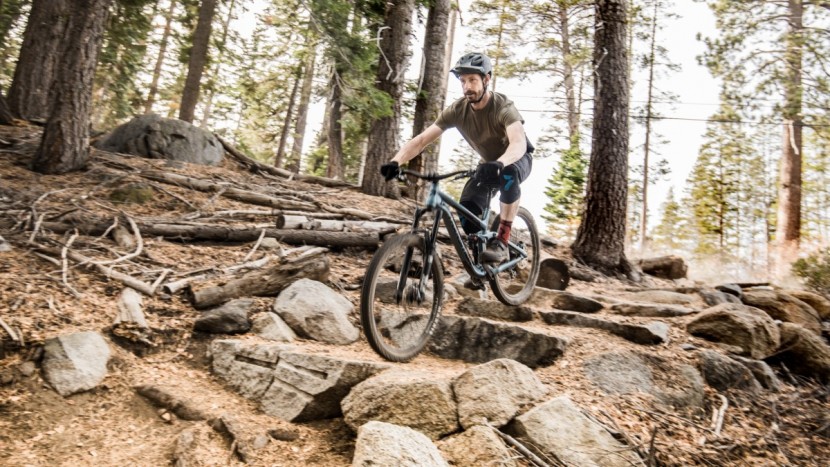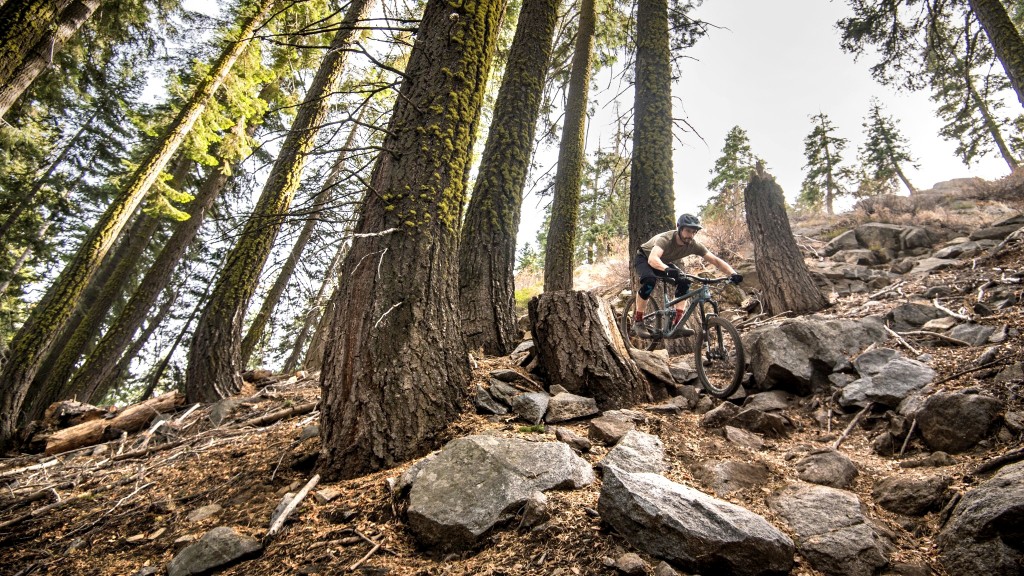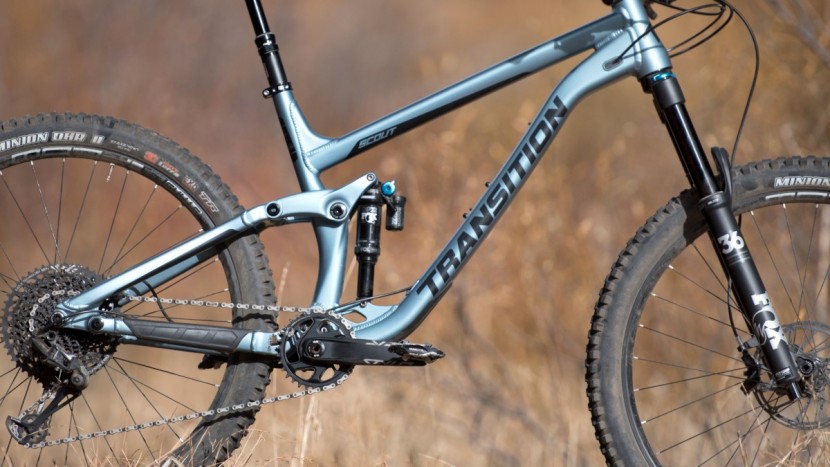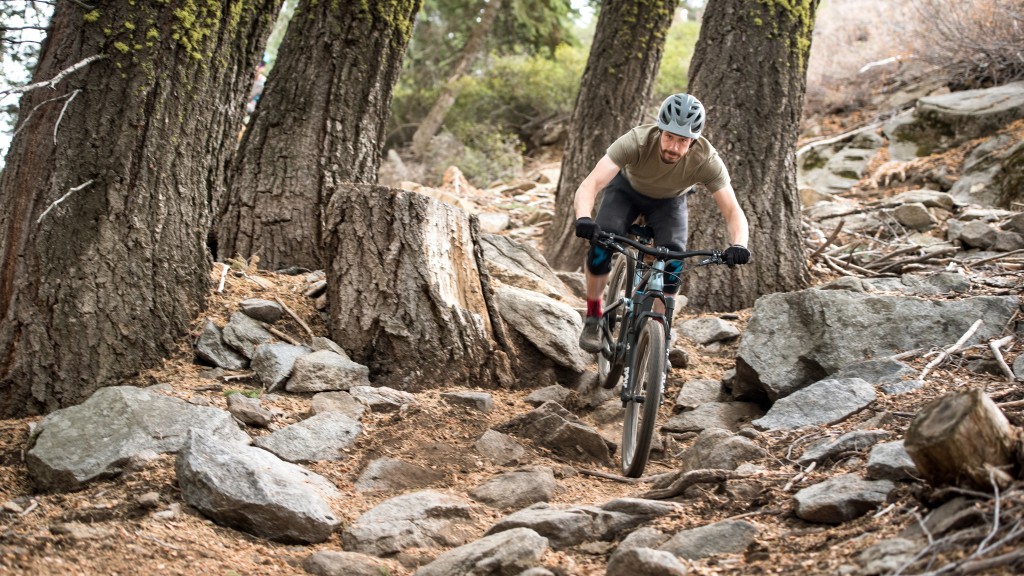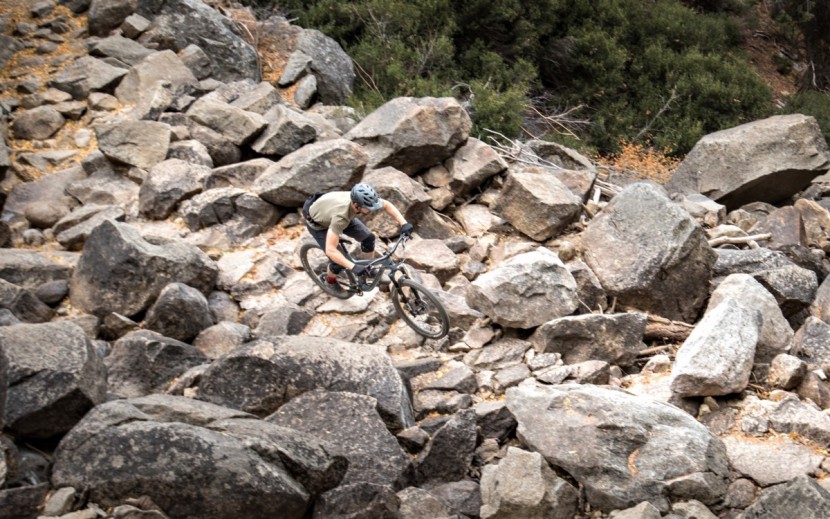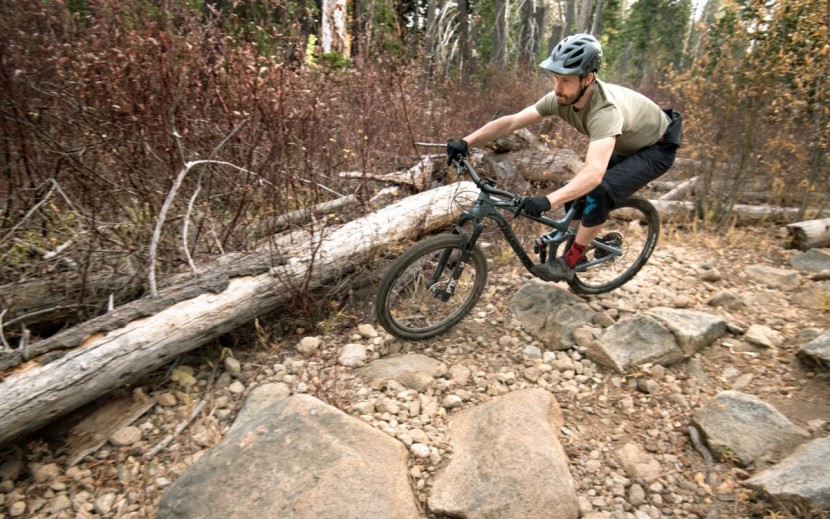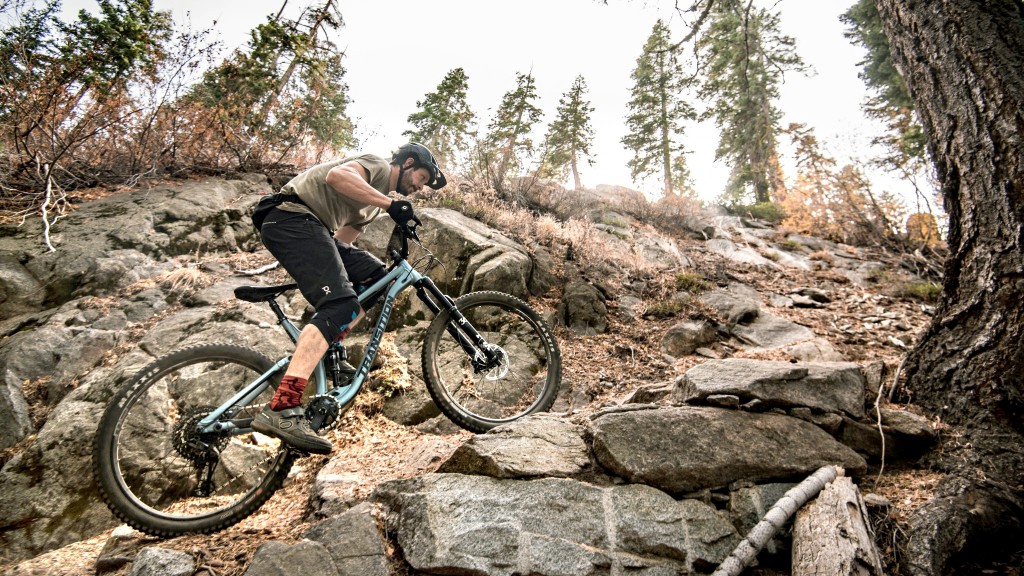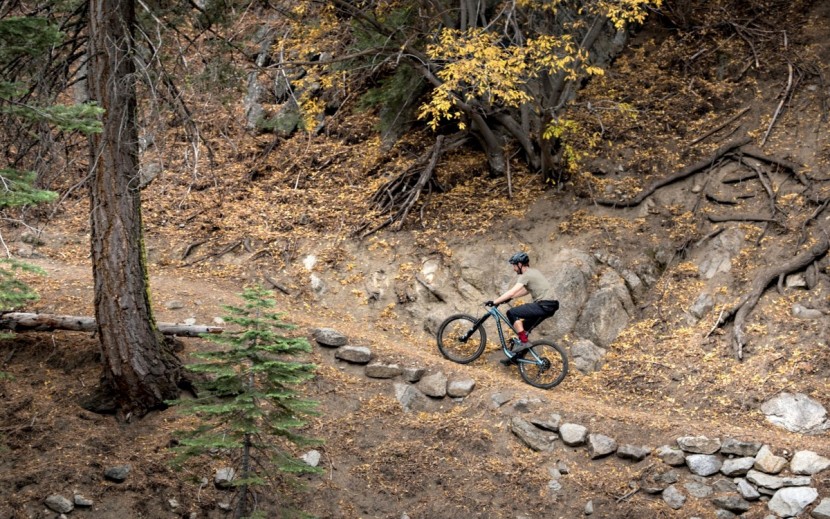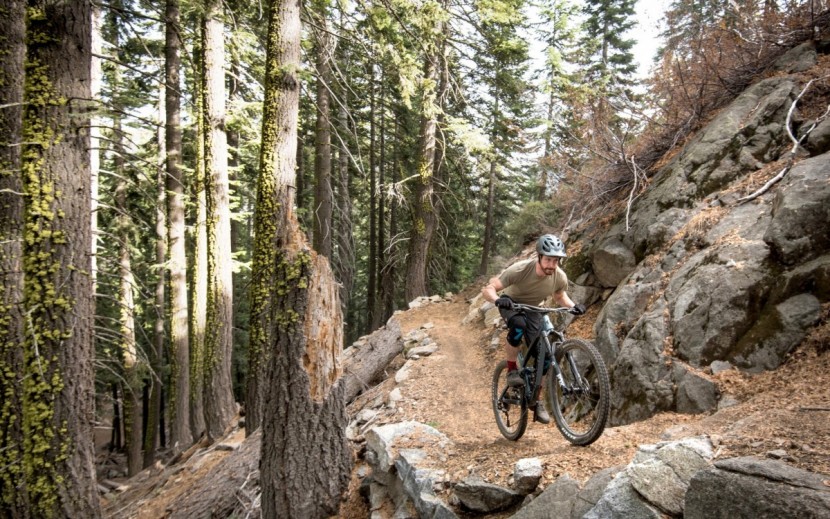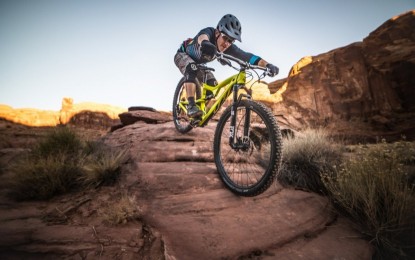Transition Scout GX Review
Our Verdict
Our Analysis and Test Results
Should I Buy This Bike?
Transition's markets the Scout as a fun, playful, and versatile trail bike that strikes a “sweet spot” with 130mm of rear wheel travel and aggressive angles. We found that this assessment hits the proverbial nail on the head. This mid-travel shredder is supremely fun. There are a lot of 130mm trail bikes that climb much better. There are also better options for all-day rides. That said, few, if any, bikes in this travel class can match this bike's sky-high fun factor. The Scout punches far above its weight class on the descent and is not shy when pointed down fairly rowdy trails. Oh yeah, it also rails berms and flow trails with a balanced feel in the air.
On a tight budget? The YT Jeffsy Base is a very fun and affordable 150mm trail bike. It rolls on 29-inch wheels and produces an impressive blend of climbing and descending performance. The 2020 redesign brings the Jeffsy close to matching the Scout's smile-inducing levels of fun and aggressive descending. The best part? Our Jeffsy Base sells for $2299 with a stellar build kit for the price and the option of either 27.5-inch or 29-inch wheels.
Frame Design
The Scout is designed around 130mm of rear-wheel travel. Transition uses a Horst Link, or four-bar, suspension design that they call Giddy-Up 2.0hh. This design features a main pivot above the bottom bracket, a rocker link on the seat tube, and a pivot on the chainstay just forward of the rear axle. This system is simple and reliable. Downhill performance is smooth and provides an excellent feel over chatter. On the ascent, the suspension is very active and offers impressive traction, but climbing efficiency relies heavily on the shock's climb switch.
We took our own measurements, and our size large test bike had a 630mm effective top tube and 424mm chainstays to create a 1220mm wheelbase. We measured the reach to be 472mm. With the stock 150mm fork, the head angle measured 64.9-degrees. The effective seat tube angle is 75.0-degrees, and the bottom bracket sits 338mm off the ground. Our large test bike tipped the scales at 32 lbs 5 oz set up tubeless without pedals.
Design Highlights
- Available in aluminum only.
- 130mm of rear-wheel travel, designed around 150mm fork
- 27.5-inch wheels with clearance for up to 2.8-inch wide tires
- Boost Spacing
- Available in XS-XL frame sizes
- Threaded Bottom Bracket
- Two available build kits - Scout NX $2999, Scout GX $3999 (tested), Frame Only - $1999
- Three-Year Warranty
Downhill Performance
The Scout is a fun descender that punches above its weight class. This bicycle ticks all of the boxes including stability, an aggressive geometry, and a playful feel. The versatility of this mid-travel shredder stands out as it performs well on a huge range of terrain. The component grouping, highlighted by a 170mm dropper post, works well on the descent.
The Scout is a more confident descender than any 130mm travel bike we have tested. This bike uses Transition's Speed Balanced Geometry (SBG). Essentially, SBG uses a slack head tube angle with a reduced offset fork which brings the axle back towards the frame. This is intended to improve steering at all speeds, add traction, and deliver enhanced weight distribution. Long story short: it works. SBG offers the benefits of a slack front end on steep trails and high speeds without feeling clunky in tight corners or at slower speeds. One of our favorite trail bikes, the Ibis Ripmo, also uses a reduced offset fork paired with a slack front end. We expect this design to become more and more prevalent in the coming years.
The Scout operates very well at speed and is unperturbed by chunky trails. Feeding it into rock gardens is confident and stable. On chattery, smaller, rock gardens, the Giddy Up four-bar suspension is calm and muted. The Scout cruises right over the small stuff. On bigger and steeper lines, the Transition stands up remarkably well given its mid-travel designation. The rear end, equipped with a Fox DPX2, handles larger impacts well. The Transition bike strikes a nice balance of small bump performance and big-hit support. The mean front end comprised of a 150mm Fox 36 and 2.5-inch Maxxis Minion is stout and is not easily deflected. To be very clear, this is not a true enduro or park bike, but the Scout can get impressively radical on rowdy terrain for a bike with 130mm of travel.
On fast and flowy trails, the Scout rails. The 2.5-inch Minion DHF is aggressive and backs up to rider input. This bike dips into berms effectively and rips through corners. The mid-travel platform is firm enough to push against through pumps and rolls in the trail. Despite its enduro-esque angles, the Scout rides more like a mid-travel bike on fast and smooth trails. This bike was impressive on jump lines by providing a balanced and predictable feel.
The component group on our Scout GX is dialed. The Fox 36 paired with a 2.5-inch Maxxis DHF is a classic and reliable combination. This tried and true combination creates a confident and aggressive front end. The SRAM Guide R brakes are decisively fine. One highlight is the 170mm RockShox Reverb dropper post. For years, the 150mm dropper post has been standard fare, but in the couple years, longer droppers are becoming more prevalent. 170mm+ posts are typically found on large and extra large frames. Long-travel dropper posts open the door to getting extra rad on the descent. While lowering your seat by an extra 20mm sounds trivial, it is noticeable, and it is awesome.
Climbing Performance
The Scout is a capable climber that sets you up in a comfortable position. Despite its heft, this bike spins its way uphill relatively efficiently. Given the length of this bike, it crawls up rocky climbs effectively and navigates switchbacks surprisingly well. Make no mistake, the Scout shines as a playful, descending, bike, not for feathery climbing abilities.
This bike sets you up in a comfortable and efficient climbing position. The rider is more or less floating on top of the bottom bracket which is beneficial to power transfer. The climbing motion is effective, but there is no denying this bike is heavy. At approximately 32.5-lbs the Scout is portly and you can feel it on the climb. As a result, this bike is not the best choice for rides with multi-hour climbs or full-day rides. This shouldn't come as a surprise, this bike is all about a high fun-factor and ripping downhills, not supreme climbing efficiency. Still, the Scout holds its own. For how ridiculously good this bike descends, it climbs pretty well.
The SBG plays a role on the ascent. Despite the slack head tube angle, the Scout steers well. It navigates uphill switchbacks relatively easily and responds to minimal rider input. The spacious cockpit creates an airy feel and allows the rider plenty of space to shift weight around on steep or technical pitches. This bike has a longer 1220mm wheelbase and it creates a rock-crawling feel. Line the bike up with a technical, punchy, climb, and give her some gas. Barring a disastrous line choice, the Scout will scoot right up and over the chunk.
As with most four-bar bikes, the Scout relies heavily on the shock's climb switch. If you live in a land of ultra-technical and rough climbs, you may want to think about leaving the shock open for enhanced traction. Most riders will want to flip the climb switch into the middle position. This eliminates pedal bob and makes better use of your energy. In addition, the climb switch preserves the geometry a little bit. In the open position, the bike sags into its travel and the head tube angle and seat tube angle slacken. Using the climb switch prevents the bicycle from sagging into its travel thus preserving efficient geometry.
The SRAM Eagle drivetrain worked well through testing. The 32:50-tooth climbing gear is fine, but some riders might consider a 30-tooth chainring for lighter climbing. The Stan's wheels offer a solid tire footprint and the 29mm inner diameter is about standard for 2018. The Stan's Neo hubs offer 10-degree engagement which is decent for a stock wheelset.
Photo Tour
Value
The Scout GX delivers a unique and charismatic ride that would be a great option for a lot of riders in a lot of locations. The build kit on our $3999 test bike is great. With the blend of excellent on-trail performance, solid build kit, and reasonable price, it is easy to call this bike a strong value.
Conclusion
The Transition Scout GX is a killer trail bike with an attitude. This bicycle offers a supremely fun ride and makes sense in many applications. Downhill performance is aggressive and stable. The Scout can punch far above its weight class thanks to its mini-enduro feel. The climbing abilities are good enough to get you on top of any climb. This fun-loving, aggressive, trail bike sells for a reasonable $3999 with stellar components…we love it.


